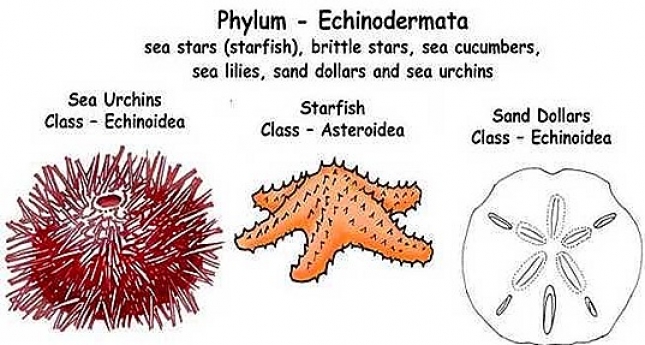Medically reviewed and approved by a board-certified member
Zoology
INTRODUCTION TO PHYLUM ECHINODERMATA
By BS MediaTwitter Profile | Published: Monday, 05 June 2017

- Jacob Klein (1734) first used the term Echinodermata for sea urchins.
- Linnaeus in 1758 placed Asterias, Echinus and Holothuria under Mollusca.
- Lamarck (1801) included these animals in the order Echinoderm of the Class Radiata.
- In 1847 Leuckart gave phylum rank to the Echinodermata.
- The Echinoderms are spiny skinned animals.
- They are exclusively marine animals. They do not show distinct head.
- They show pentaradial symmetry.
- They show peculiar water vascular system of coelomic origin.
- They are coelomate animals with pentaramous radial symmetry, that is the body can be divided into five parts arranged around a central axis, but the larva is bilaterally symmetrical.
- They have an endoskeleton of calcareous ossicles made from mesoderm, there are also external spines which may be movable or fixed.
- Respiratory organs are minute gills protruding out from the coelome.
- There is no definite blood vascular system, it is represented only by lacunar tissue, there are no definite excretory organs.
- Nervous system forms a ring around the mouth with nerves radiating from it, it is the principal nervous system and is in contact with the ectoderm in addition there is a deeper nervous system lying In the mesoderm.
- Sexes are usually separate but copulation does not take place. Echinodermata have no parasitic forms.
End of the article